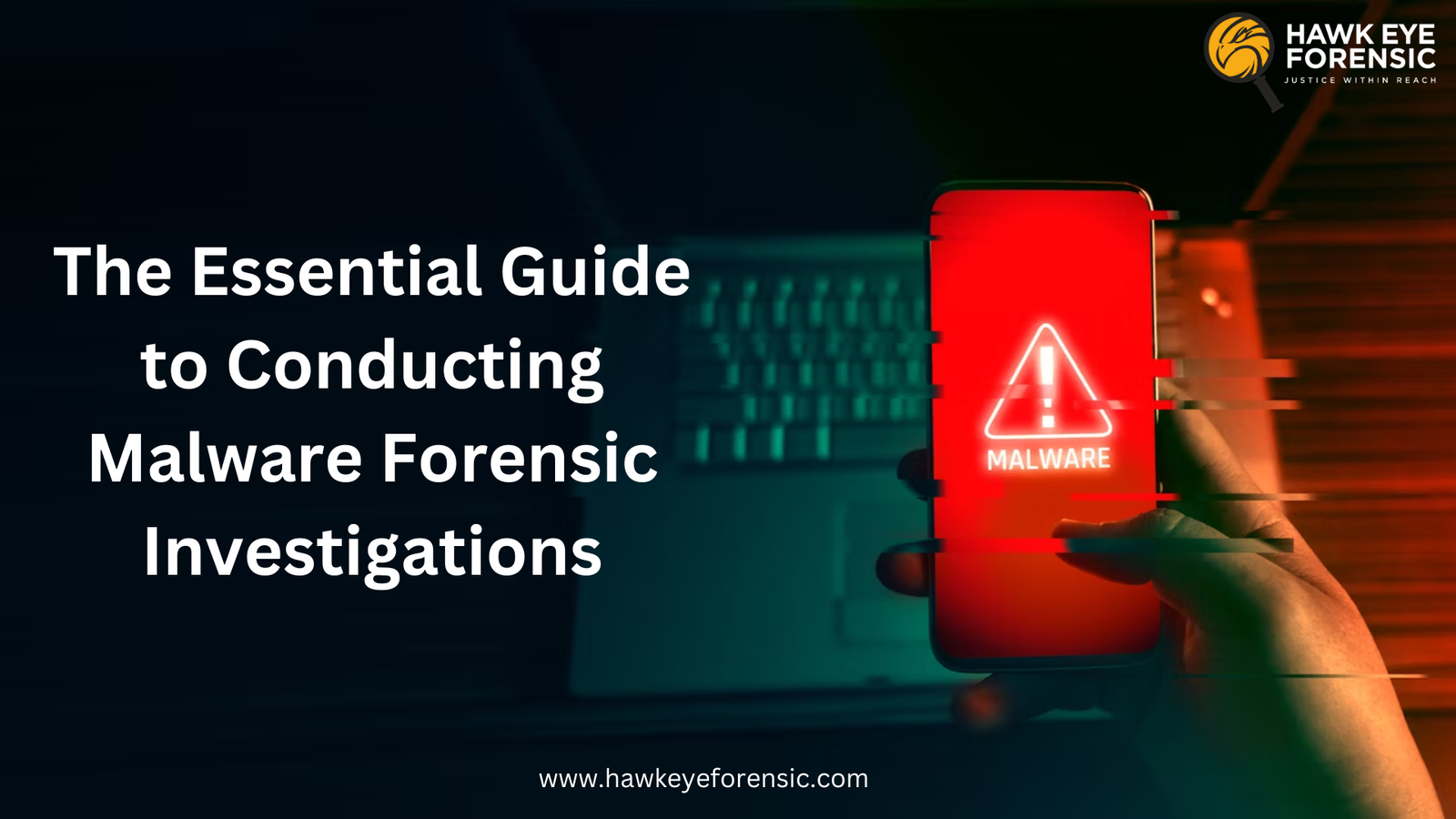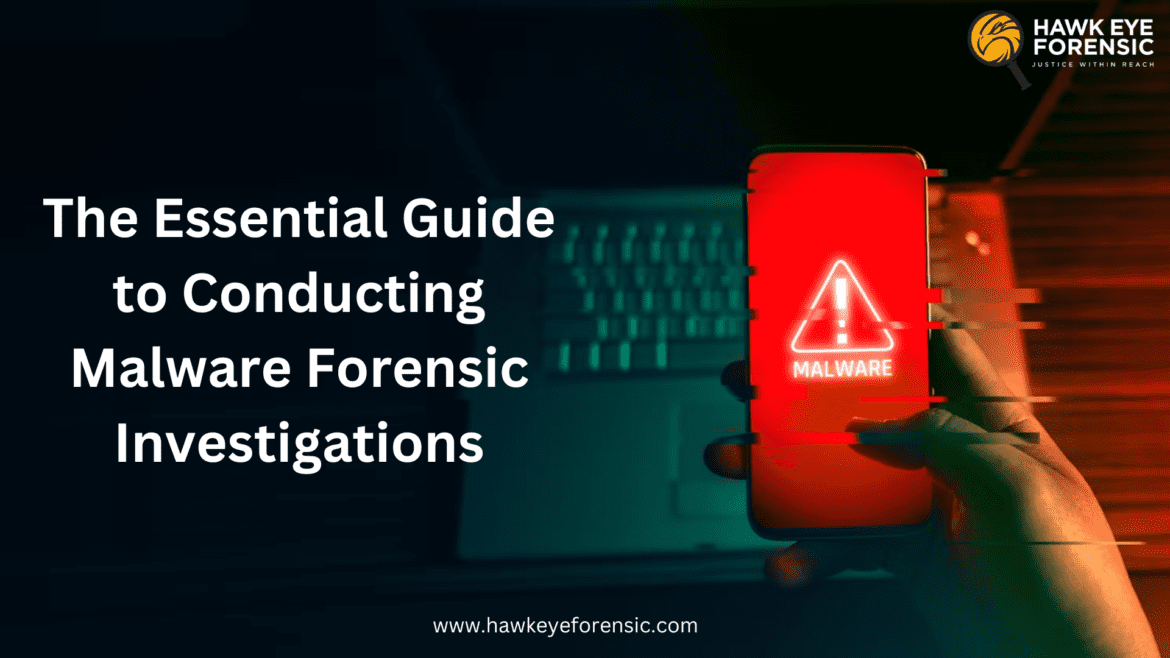
Understanding Section 45 of the Indian Evidence Act, 1872
SECTION 45: OPINIONS OF EXPERTS (IEA, 1872) {taken from IEA, 1872} When the Court has to form an opinion upon a point of foreign law, science, or art, or as ...


Digital Forensics Anjali Singhal todayDecember 18, 2023


Malware is a recurring and dynamic danger in the field of cybersecurity that can seriously harm networks, systems, and sensitive data. Effective malware forensic investigations are essential for determining the scope of the compromise, determining the nature of an attack, and putting mitigation plans in place for potential future threats.
Malware Analysis: What Is It?
“Software designed to infiltrate or damage a computer system without the owner’s informed consent” is the definition of malware. Malware is any software that carries out malicious tasks, such as eavesdropping, information theft, etc. The number of linked endpoints and our dependence on technology will only lead to the mutation of classic malware varieties such as viruses, Trojan horses, and worms. This leads to the emergence of new malware types that harm your systems covertly and without obvious warning.
“The process of dissecting malware to understand its core components and source code, investigating its characteristics, functionality, origin, and impact to mitigate the threat and prevent future occurrences” is the basic definition of malware analysis.
Let’s examine the definition and goals of malware analysis:
⦁ It deconstructs the malware: Demystifying malware and cyber threats to raise awareness is a significant component of malware investigation. Malware is, after all, only software designed with the specific intent to damage users. To prevent malware from entering your ecosystem or, at the very least, from spreading there, it is essential to understand the code and how it operates.
⦁ It investigates its characteristics: Malware is no different from other software in that it leaves a distinct digital trail. How does a particular family or variety of malware handle data? How does it proliferate? How quickly does it replicate, and how does it hide? It is simpler to detect malware if you are aware of its precise features.
⦁ It breaks down how it works: It is challenging to get this crucial component of malware analysis correct. Usually, malware will wait to attack until it is in a hiding place. This implies that the user won’t understand how it works until it’s too late. Through code analysis, malware analysis attempts to ascertain the software’s intended functioning.
⦁ It traces the malware’s origin: malware can be notoriously hard to trace, and hackers take advantage of this by holding data ransoms for large amounts. Malware analysis tries to see beyond the anonymization of the coder and trace it back to its origin — a person, an IP, a geographic location, or even an organization, among others. This helps in the swift intervention of legal authorities during an attack.
⦁ It attempts to forecast the effect: Through the integration of the aforementioned lines of inquiry, a likely impact profile can be determined. The worst-case impact of malware is indicated by its preferred dissemination channels, growth rate, target system characteristics, and capabilities. This helps businesses to organize and implement mitigation strategies.
We’ll go over the crucial procedures and approaches needed to carry out fruitful malware forensic investigations in this extensive blog.
Summary
To understand the nature of cyber threats, mitigate risks, and strengthen defences against future assaults, it is essential to conduct comprehensive malware forensic investigations. Through the implementation of a methodical strategy that includes the gathering of evidence, analysis, documentation, remediation, and first response, companies may enhance their cybersecurity defences and protect vital resources against the always-changing field of malware attacks by utilizing forensic insights.
References
Written by: Anjali Singhal
Tagged as: ForensicTechniques, Cybersecurity Incident Forensics, Malware Analysis Techniques, Digital Forensic Examination, Forensic Investigation Procedures, Malicious Software Forensics, Incident Response and Malware, Cyber Threat Investigation, Malware Detection Methods, Hawk Eye Forensic, Forensic Data Analysis, hawk eye forensic lab, Investigative Forensics for Malware.

Document Analysis Kanchan Dogra
SECTION 45: OPINIONS OF EXPERTS (IEA, 1872) {taken from IEA, 1872} When the Court has to form an opinion upon a point of foreign law, science, or art, or as ...

Digital Forensics Anjali Singhal
Digital Forensics Anjali Singhal / May 20, 2024
Introduction In the modern digital landscape, the threat of malware looms large over individuals, businesses, and governments alike. Malware, short for malicious software, encompasses a variety of harmful programs designed to disrupt, damage, or gain unauthorized access to computer systems. With cyber threats becoming more sophisticated, the field of malware forensic analysis has become crucial. ...
Copyright 2023 all rights reserved by Hawk Eye Forensic.
Post comments (0)